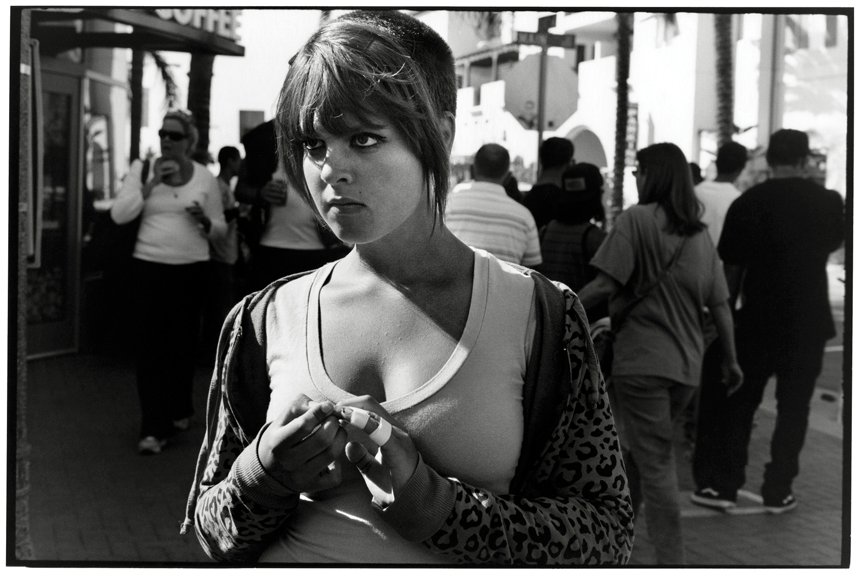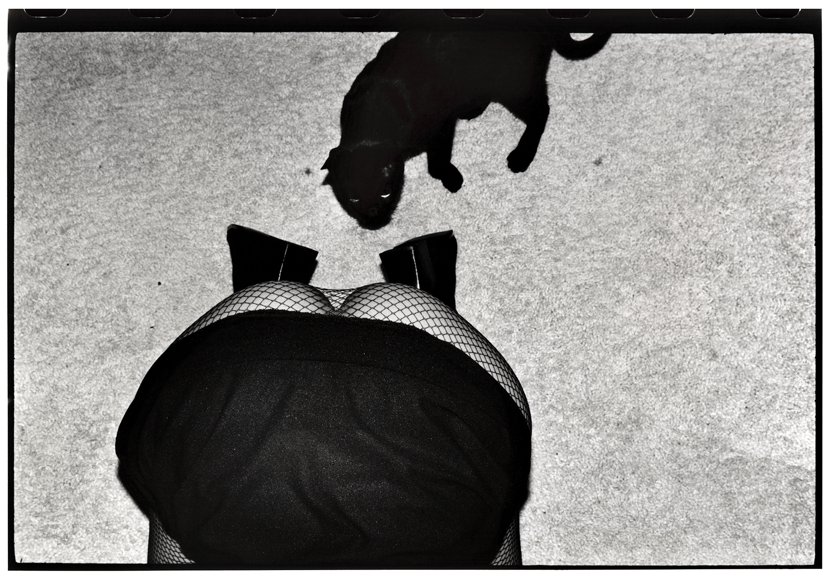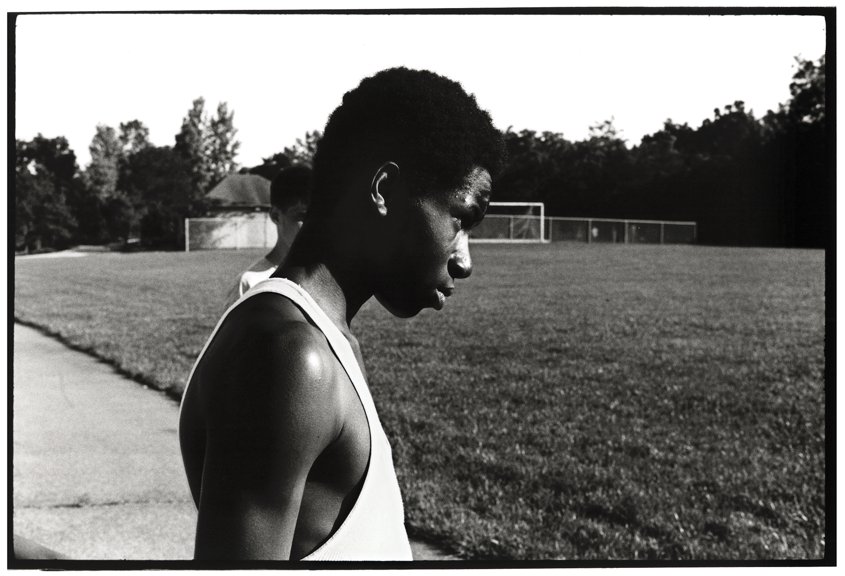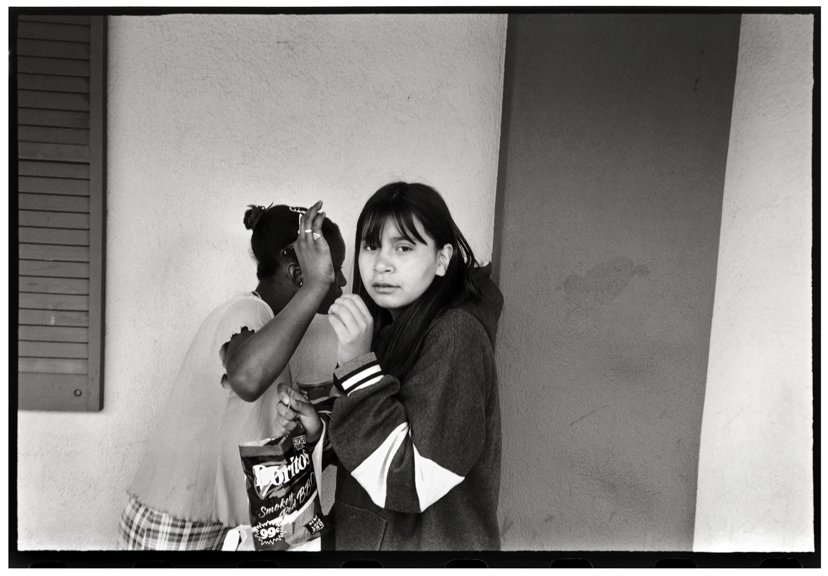Most may know Deanna Templeton as the wife, muse and woman behind skater, photographer extraordinaire, Ed Templeton. Just the same, though, you could say that Ed is the man and muse behind Deanna. But the truth is that they walk hand in hand – sometimes literally – especially when they go on their daily stroll through Huntington Beach photographing the seaside community’s sun drenched denizens. Indeed, Deanna and Ed are truly one of the greatest artistic duos in recent memory. While their work isn’t purely collaborative, both of their identities as artists and photographers are wholly unique, dynamic and alive with a searing, youthful vibrancy.
Just recently, Deanna released a beautiful book of photographs that explores the human form under water. One day, Ed jumped into their pool naked and Deanna grabbed her camera. The images would result in a continuing series of nudes – swimming bodies of friends, shooting gracefully through the undulating laps of the pool water, trailing bubbles behind, leaving the swimming figure abstracted and refracted in the reflection of the net-like sunlight. A limited edition version of the book comes with a number of extras, like an additional printed page, a signed print and a special cover.
Tomorrow night, Deanna will be exhibiting a more personal series at Little Big Man gallery in Los Angeles. The series, entitled What She Said, which borrows from the Smith’s track of the same name – features images of female youth (that remind her of herself) juxtaposed next to excerpts from her diary when she was a teenager. Indeed, Deanna’s photographs harken back to early punk days – a studded, spiked and tattered rebellious youth in Southern California, where she met Ed when they were still teenagers. The photographs, which were taken over the course of a 15-year period, exemplify Deanna’s own transition into adulthood and womanhood.
I got a chance to chat with Deanna before her solo show to discuss her photographic history, getting her friends to swim naked in her pool and her plans for the future, which include more collaborations with her husband Ed.
OLIVER KUPPER: I want to go back to when you first started taking pictures. I read somewhere that your mother gave you a camera as a coming home present after running away. Is that true?
DEANNA TEMPLETON: Yes, it is. It had nothing to do with my own home life. I was supporting my best friend, at the time, who couldn’t bear living at home. We were fourteen or fifteen. It was only for one night. I went with her so she wouldn’t have to do it by herself. It sucked so bad, of course. We basically just stayed the night on the street. We tried to sleep on a little patch of grass. Some guys tried to invite us into their van. By the time morning came around, she found a friend’s house that she could stay at, and I was like, “OK, I’m going home.” I think my parents were so freaked out, like “Where did this come from?” And I never told them I was doing it for a friend. So they said, “We’ll give you whatever you want, just don’t do that again.” And I said, “I would like a Canon T90, please.”
KUPPER: That’s a perfect gift. That really opened up a lot for you.
TEMPLETON: You would think that that’s a little too much camera for a fifteen-year-old girl. I didn’t deserve it. Maybe a year later, I was on the way back from visiting family in Guadalajara. I packed it in my checked luggage, and it wasn’t there when I came back. I didn’t respect the equipment. After that, it switched to a point and shoot for quite a few years.
KUPPER: Did you get any pictures out of it?
TEMPLETON: Nothing that I saved. Just shooting around high school, with a bunch of friends. I don’t think I have any from that time. I have all my negatives in books. I catalogue them in years. I have two catalogue books called “Crap.” I couldn’t bear to throw them away, but I couldn’t look at them either. I imagine that if they were still around, they would be in there.
KUPPER: What were some of the things you were interested in shooting? Your surroundings, punk shows?
TEMPLETON: I wasn’t doing punk shows, because I didn’t have a dedicated flash. It was mostly my surroundings. I would do a little bit of high school, home life. I wasn’t focused. It was new to me. I didn’t really know what I was doing. The reason why I wanted a camera in the first place was because I had a girlfriend who would shoot the punk bands at shows. I watched her develop her film, and that’s what got me hooked.
KUPPER: When did photography become an art form for you?
TEMPLETON: That was in 1998. I was still shooting with a point-and-shoot, but Ed started to see that I had an eye for it. He bought me a Canon A-1 and said, “Let’s see what you can do with it.”
KUPPER: Were there any photographers that you looked up to?
TEMPLETON: The first was Hiromix, because he did the point and shoot. He was the first that caught my eye.
KUPPER: In a previous interview, you talked about female photographers feeling alone. Why do you think that is?
TEMPLETON: In the beginning, when I first got the money to upgrade my gear, I felt like I was a part of the boy’s club. It’s always been more male-dominated. I know there’s women out there. There’s just not as many females represented.
KUPPER: Male photographers seem to get more attention, especially street photographers.
TEMPLETON: You could say that more generally about art. The Guerilla Girls movement was all about the under-representation of females in art, at galleries and museums. It’s not just photographers. Even right now, I’m going to be in a group show in Portland through the Dead Beat Club. Clint, the main guy, is really supportive of female artists. But the main core of artists doesn’t have many women. Even the gallerist asked why there weren’t more women in the show. I do feel now, the older I’ve gotten, I’ve met more women photographers, even in skateboarding photography. I don’t feel alone anymore.
KUPPER: You work a lot with Ed, your husband. You shoot a lot and collaborate. Do you teach each other lessons?
TEMPLETON: I would say there’s probably more from him on me. I’ve been very fortunate. I don’t need to go to school for photography. I have real-like lessons when I go out with Ed, just from watching him, how he works. I’ve always compared his style of photography to the way he skates. He’s constantly looking ahead. He’s always weaving in and out of obstacles to get to what he wants to get. I feel like he took that to his photography. He walks faster than I do, so I am constantly behind him. Just watching him work, it’s really impressive. I try to take what I see from him and apply it to my work. But there is something in my gut that makes me stop and run up to people.
KUPPER: You both have distinct style. I think he shoots very fast, while you take your time.
TEMPLETON: When we come back from trips, I always have one roll to his three.
KUPPER: There’s two types of photographers: people who will stop and ask, and someone who will just get in their face. Either works, but you have to have a personality for both.
TEMPLETON: He’s not getting in their faces. For the most part, he’s just passing by. You don’t even notice. He’s so smooth. The camera is so quiet. People look up like, “Did I hear something?” If there’s someone who notices and looks upset, I usually say something like, “That was so cute,” to diffuse the situation.
KUPPER: Do you think photography has lost some of its magic? Not just digital photography, but the sheer number of people taking pictures?
TEMPLETON: It’s hard for me to talk about that because I’ve never shot digital. My experiences are only with film and analogue. I, personally, think that there is a difference when I’m looking at a print. Everyone needs to do what’s best for them and how they want to work. I do want to explore and grow, but some of the new ways of photography don’t interest me. It’s good to have a wide range though.
KUPPER: People are starting to go back to film more. There’s a romance and a depth to it. I remember being able to go to the drugstore down the street and buy film for a Polaroid. You can’t do that anymore.
TEMPLETON: Maybe fine art photography will go back to fine art photography with film, because it will be special again.
KUPPER: It seems like more magazine are starting to employ photographers that use film. You just shot for Wonderland Magazine?
TEMPLETON: That was fun. I don’t know how many film photographers they used, but they were surprised by the turnaround. They were like, “We need it now!” And I was like, “OK, I need to take it to the lab to develop them, I’ll have to scan the negs and then scan them larger.” It’s the same with Ed. Any editorials that he’s done for magazines have always been film. People are starting to want that again, which is nice.
KUPPER: I want to talk about your new book, the swimming pool book. It’s different than your previous work. How did this series come about?
TEMPLETON: It started about eight years ago when Ed decided to take a skinny dip in our pool. I decided to grab my camera and shoot some photos of him. Later, when I got my print sheets back, it looked different from anything I had ever shot. I really liked it. It was only eight frames, but I thought it could be interesting. I asked a couple of friends if they would mind swimming for me. I did a show with what I shot that summer, but I had a gut feeling that it wasn’t done yet. I kept shooting. About two years ago, a publisher saw some of the work and was interested in it. When I look back at that first show, three or four images made it into the book from back then. I really felt that it took eight years to sit with the images and explore what I liked and didn’t like in a photo. That didn’t happen until, like, four years in. For instance, if the swimmers swam more aggressively, there was a lot more distortion in the images. The images, now, are quiet and calm.
KUPPER: You were developing a new style. A lot of photographers don’t do that; they just stick to one style. It’s nice to have that freedom.
TEMPLETON: It just came with time. If I had been offered a book that first year, it would have had a completely different feel. Just so everyone knows, when I say eight years, I mean eight summers. I don’t know how to work our pool heater. The sun played a big role; in the summer time I had a longer window before the shadows would creep into the shot.
KUPPER: You’re having a show coming up at Little Big Man Gallery? What is the work you’re showing now?
TEMPLETON: The director of Little Big Man was over in my office, looking at all the projects I was working on. He really connected with a series called “What She Said,” which I’ll be presenting. It’s photographs of young women who remind me of myself when I was a teenager, either how I thought I was, or how I wish I could have been. I’m pairing each photograph with a diary or journal entry from my personal diary when I was 14 to 18. It’s personal. It’s a little embarrassing.
KUPPER: Do you have any new series that you’re working on?
TEMPLETON: Eventually, I’m hoping to get “What She Said” into a book form. Ed and I go out shooting together every afternoon in downtown Huntington Beach. We talked about doing a two volume, “his-and-her” take on Huntington Beach. We’re constantly working on it, but we don’t have a set date for that yet.
You can purchase Deanna Templeton's book The Swimming Pool from Um Yeah Arts. Her solo show What She Said opens tomorrow night and runs until July 31 at Little Big Man Gallery in Los Angeles. Portrait of Deanna by Ed Templeton. Text and interview by Oliver Maxwell Kupper. Follow Autre on Instagram: @AUTREMAGAZINE








